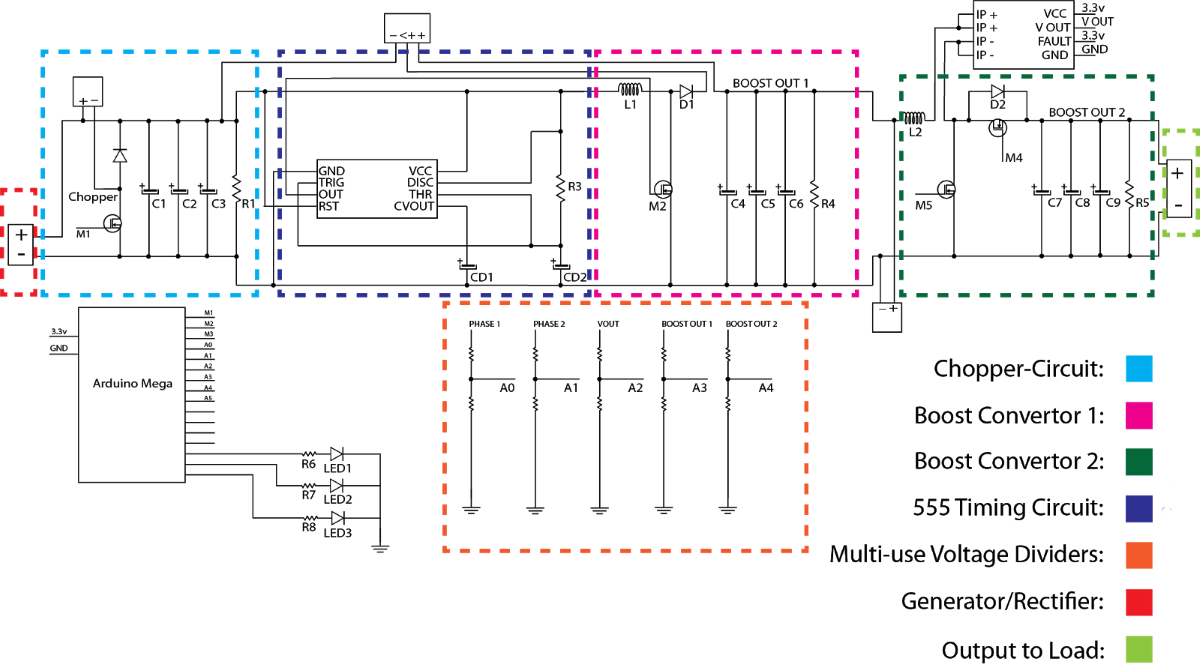The final project is a manufactured PCB of our synchronous boost converter topology (two complementary MOSFETS) that minimizes wind cut in times. A PWM signal is generated through PI control (see Design Decisions). Three potential break designs have been implemented into the system:
The PCB also features three LEDs to provide visual feedback to the user during competition when measurement tools cannot be used to detect power. Several MATLAB-Simulink models have also been created to program these features onto the Arduino Mega. The PCB and other peripherals are housed inside of a NEMA-1 enclosure that uses plastic mounting screws to reduce communication routing interference.
Schematic:

The final product was never able to be properly tested and utilized at competition due to the COVID-19 Pandemic. Several forms of documentation have since been created to assist future Northern Arizona Teams throughout the design process. Our hope with these manuals is that future teams will be able to easily pick up where we left off and either improve on our design or create something better.